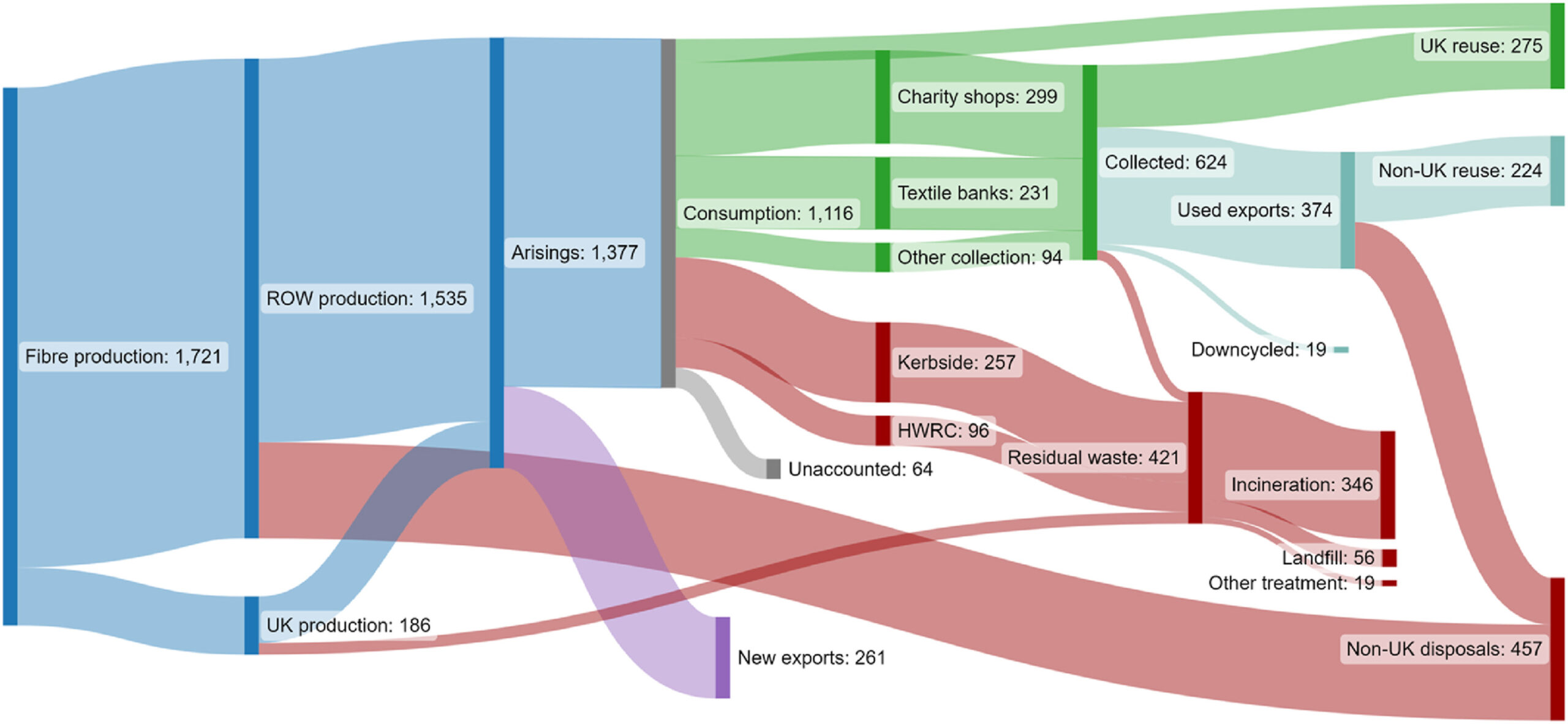 Image credit: Material Flow Analysis in the base year of 2021, modified from Millward-Hopkins et al. (2023). All values are in kilotonnes (kt) of clothing, and include all fibres. Figure made in SankeyMATIC
Image credit: Material Flow Analysis in the base year of 2021, modified from Millward-Hopkins et al. (2023). All values are in kilotonnes (kt) of clothing, and include all fibres. Figure made in SankeyMATIC
Scenarios for reducing the environmental impacts of the UK clothing economy
In the 21st century the carbon emissions, material consumption, and impact on planetary boundaries associated with clothing have increased dramatically, driven in large part by fast fashion. The UK represents a typical, affluent, import-reliant Global North country, with clothing consumption per capita at double the global average and the impacts largely offshored. Progress towards a sustainable, circular clothing economy in the UK has been sluggish, as it has been globally. Here, we develop scenarios exploring how, over the coming two decades, the UK clothing economy could achieve the ambitious reductions in environmental impacts necessary to bring humanity’s impact back within planetary boundaries. The scenarios consider the impacts of production- and consumption-focused changes, and the modelling uses material flow analysis to develop an assessment of energy consumption, carbon emissions, water consumption, and land use. We find that cleaner production and recycling alone could provide significant benefits for land and water use, reducing footprints by 60–70% by 2040. But to meaningfully reduce energy use, transformational changes will be required throughout supply chains at consumer and post-consumer stages. The same is true if the UK clothing economy is to be on track for net-zero by 2050, which requires these changes to be well under way within the next decade in order to halve emissions. Given the scale of change required, it seems highly unlikely that current clothing business models are compatible with a sustainable future.
Joel Millward-Hopkins, Phil Purnell, Sharon Baurley,
Scenarios for reducing the environmental impacts of the UK clothing economy,
Journal of Cleaner Production, Volume 420, 2023, https://doi.org/10.1016/j.jclepro.2023.138352